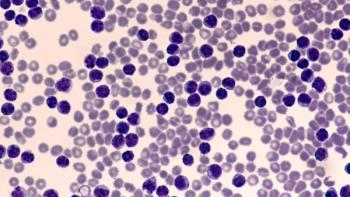
Subcutaneous Amivantamab Shows Promise in EGFR-Mutated Lung Cancer
Balazs Halmos, MD, discusses how the COPERNICUS trial aims to build on previous amivantamab studies.
The ongoing COPERNICUS trial is exploring the potential of subcutaneous amivantamab (Rybrevant; Johnson & Johnson) as a more convenient alternative to the intravenous formulation for patients with EGFR-mutated non–small cell lung cancer. Building on prior studies such as PALOMA-3, which demonstrated comparable pharmacokinetics and efficacy between subcutaneous and intravenous (IV) administration, the trial aims to evaluate this new formulation in both frontline and post-osimertinib (Tagrisso; AstraZeneca) settings.
In an interview with Pharmacy Times, Balazs Halmos, MD, discusses the rationale for the COPERNICUS trial, key design elements, and how subcutaneous delivery could ultimately enhance real-world treatment experience and accessibility for patients.
Q: What is the COPERNICUS trial, and what data brought us to this point?
Balazs Halmos, MD: The COPERNICUS trial is an ongoing study that we believe is very important. It builds on previous trials showing that combination strategies—such as amivantamab plus lazertinib, or chemotherapy plus amivantamab—can be highly effective both in the frontline setting for patients with EGFR-mutated lung cancer and after progression on osimertinib.
Amivantamab, however, has challenges in its IV formulation, including a high rate of infusion reactions and inconvenience for patients. A new subcutaneous formulation was therefore developed, and in the follow-up PALOMA-3 trial comparing the subcutaneous and intravenous versions, the subcutaneous formulation performed just as well in terms of pharmacokinetics and efficacy.
Now, the COPERNICUS trial is evaluating subcutaneous amivantamab in both the frontline and second-line settings in a real-world patient population in the United States, with expansion to Europe. It aims to understand how this combination performs in patients with EGFR-mutated lung cancer—both treatment-naive and post-osimertinib—while incorporating new strategies to manage and prevent side effects such as dermatologic and thromboembolic events. It’s a very promising program, accruing quickly, and we hope to have data available soon.
Q: From a pharmacologic standpoint, what are the notable differences in immunogenicity or systemic absorption between the subcutaneous and intravenous formulations?
Halmos: The trial includes 2 cohorts: newly diagnosed patients with EGFR-mutated non–small cell lung cancer (classical mutations such as exon 19 deletions and L858R) and a smaller cohort of patients who progressed on osimertinib.
The first cohort includes about 300 patients in the United States and another 150 in Europe. The second cohort is smaller, with roughly 30 patients, and has completed accrual. This ongoing real-world trial evaluates both efficacy and safety, incorporating new management measures. It also has a unique design that will compare results to real-world controls after completion to help determine potential efficacy advantages over single-agent EGFR tyrosine kinase inhibitor therapy.
Q: How do you see subcutaneous amivantamab fitting into the treatment landscape for patients with common EGFR mutations—either as a replacement for IV therapy or as part of combination strategies?
Halmos: Fortunately, this has already been addressed. Based on PALOMA-3, the subcutaneous formulation matches the intravenous version in pharmacokinetics across multiple measures. It is not meaningfully immunogenic and appears just as effective—perhaps even more so—than the IV formulation. Our study will hopefully reinforce those findings and highlight the broader potential for subcutaneous administration in clinical practice.
Newsletter
Stay informed on drug updates, treatment guidelines, and pharmacy practice trends—subscribe to Pharmacy Times for weekly clinical insights.




















































































































































































































